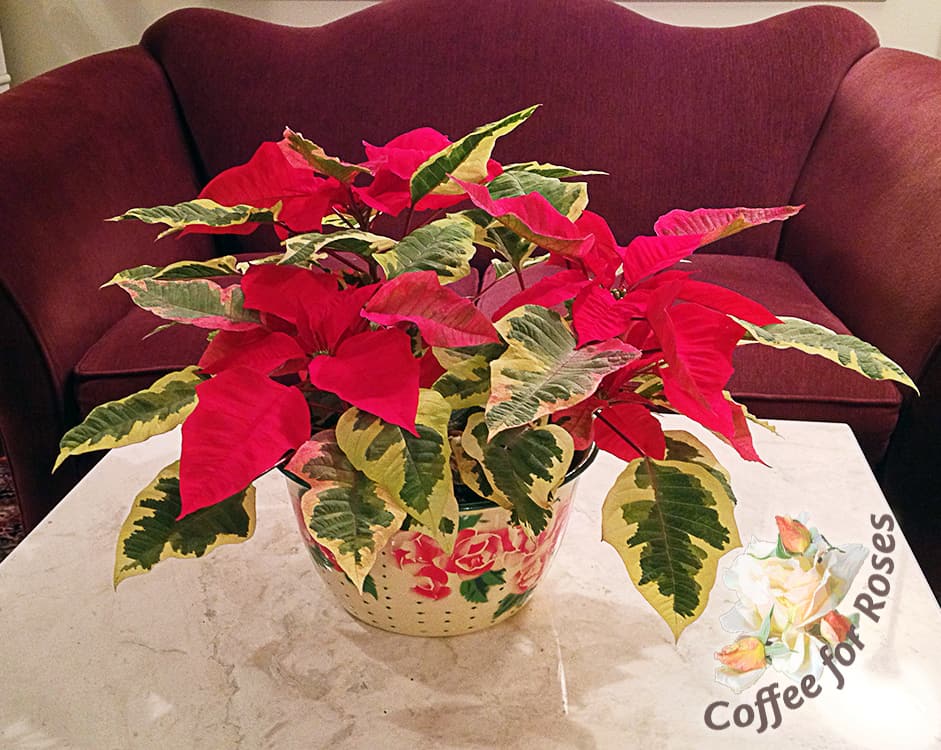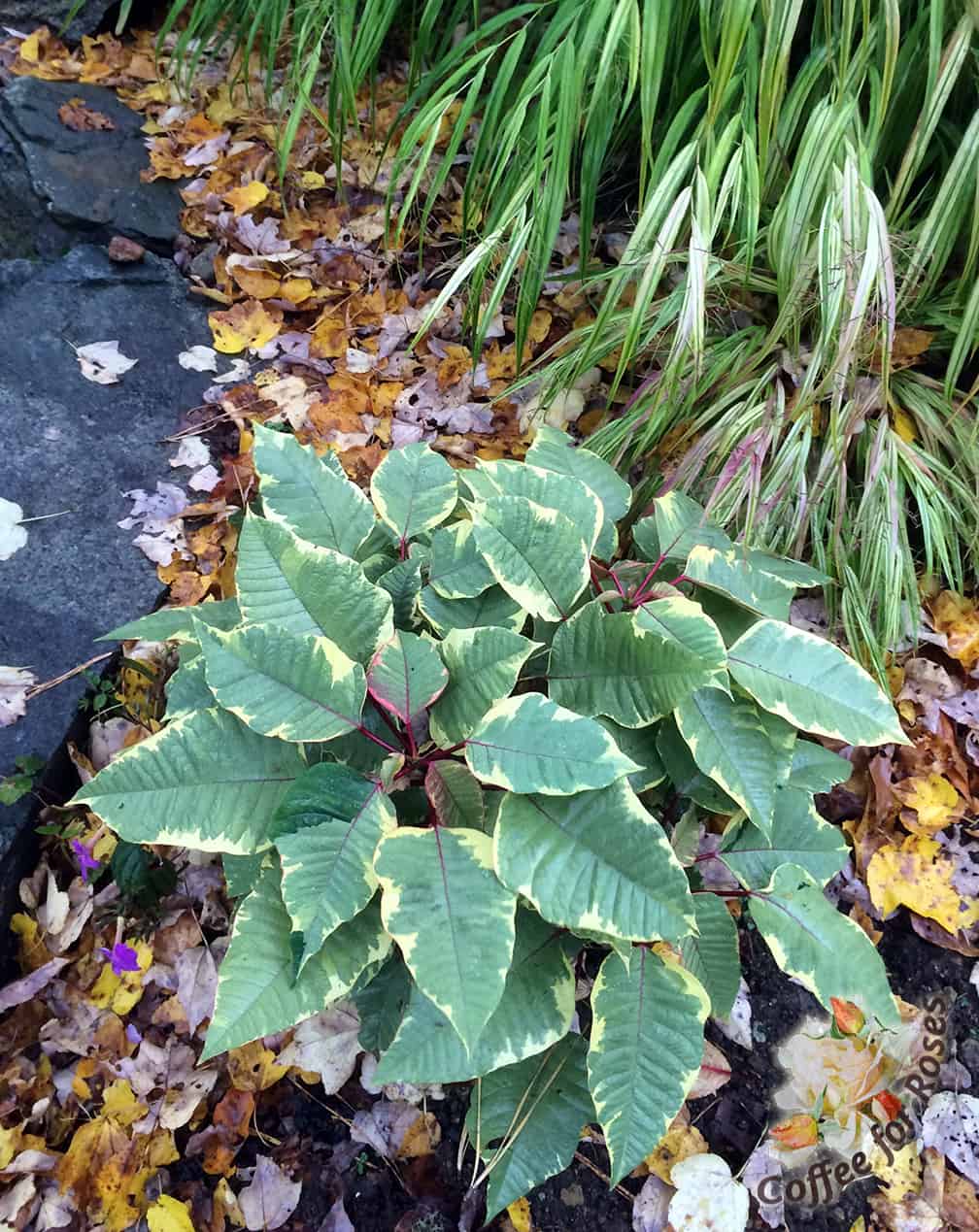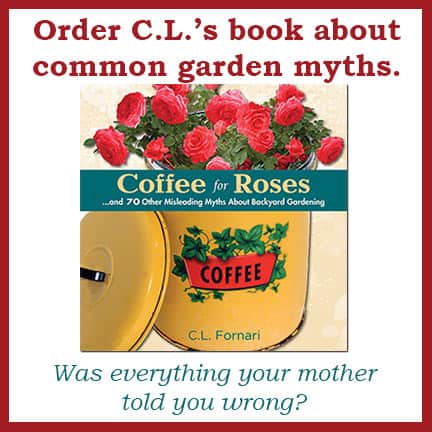It’s beginning to look a lot like poinsettia season and have I got a plant for you. My suggestion is that this year you watch for some of the poinsettias that have variegated foliage because you will get two for one. Winter color indoors, and beautiful foliage outdoors next summer. Take a look at this photos:

Here is the variegated poinsettia plant I bought last year in early December. I put it in an enameled pan I had and it was a cheerful display of color well through January.

I kept that plant alive near a sunny window for the rest of the winter. Come early June, however, I planted it in the garden and this is how that plant looked at the end of October. It graced my garden with lovely foliage color all summer and fall. It was planted in a part-shade location where it got sun in the morning and late afternoon.
These plants would also be splendid in summer containers, don’t you think? So when you’re shopping for a cheerful holiday plant, think about a variegated poinsettia and how lovely it will look in your landscape all summer.
Tips for keeping poinsettias alive until spring:
- Put your poinsettia in the brightest, sunniest window you have after the holidays.
- Keep the plant evenly moist – don’t let it wilt, but don’t keep it too swampy either. In most households a good, through soaking once a week is good but in the heart of the winter when your heating is on full steam you might need to water more frequently.
- If you want the plant to thrive instead of just survive, transplant it to a larger pot in January. Use a container that’s about 3″ larger in width and depth.
- Don’t be discouraged if your poinsettia loses some leaves from January through April. If the newest foliage is looking good, that’s all that matters.
- Start to fertilize in March with the fertilizer of your choice used according to directions. Be sure to water the plant well before fertilizing however…never fertilize a thirsty plant!
- Plant the poinsettia outside after all danger of frost is past. These plants like similar temperatures to tomatoes so use that as your guide for putting the plant outdoors. Fertilize regularly through the summer, and enjoy.



